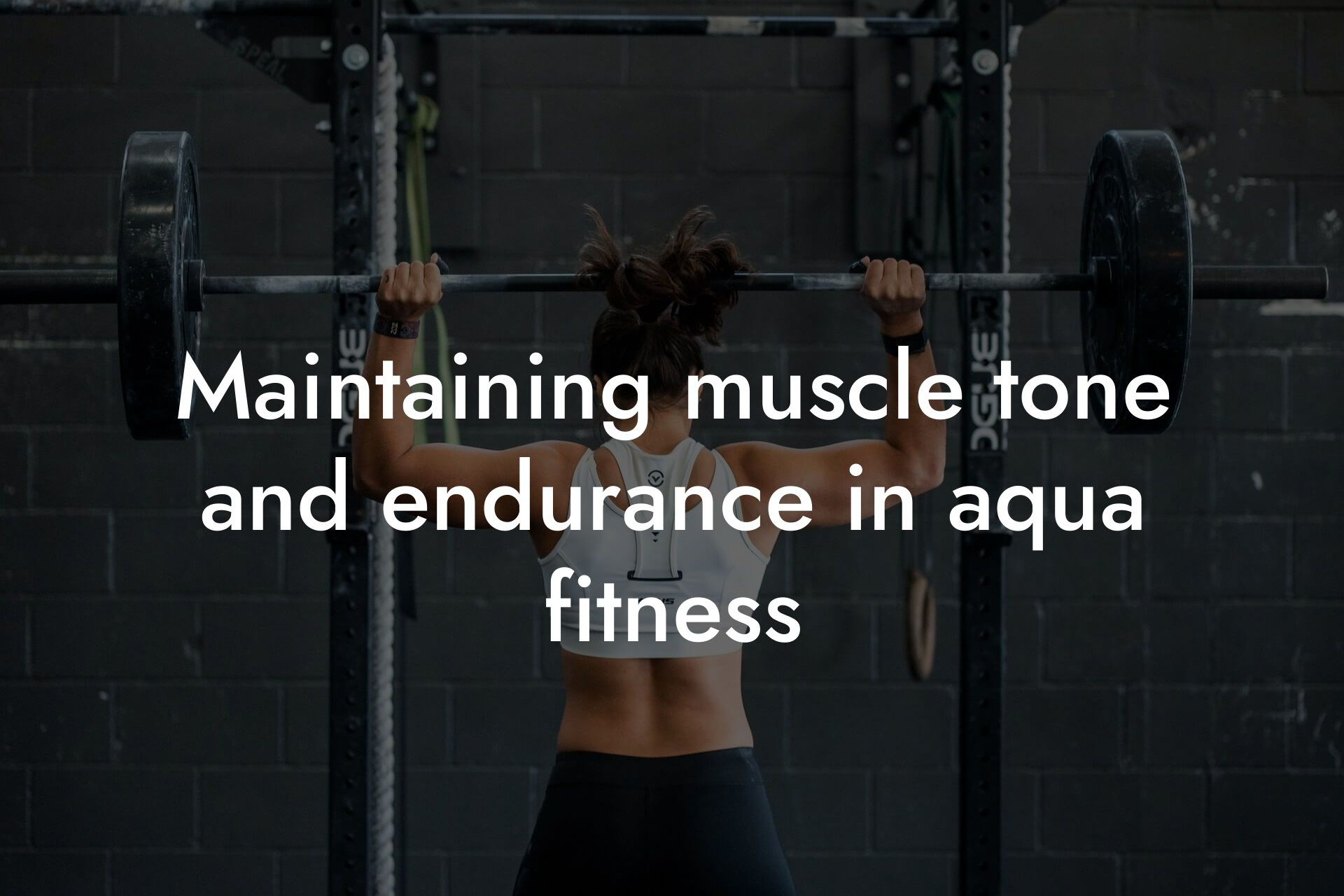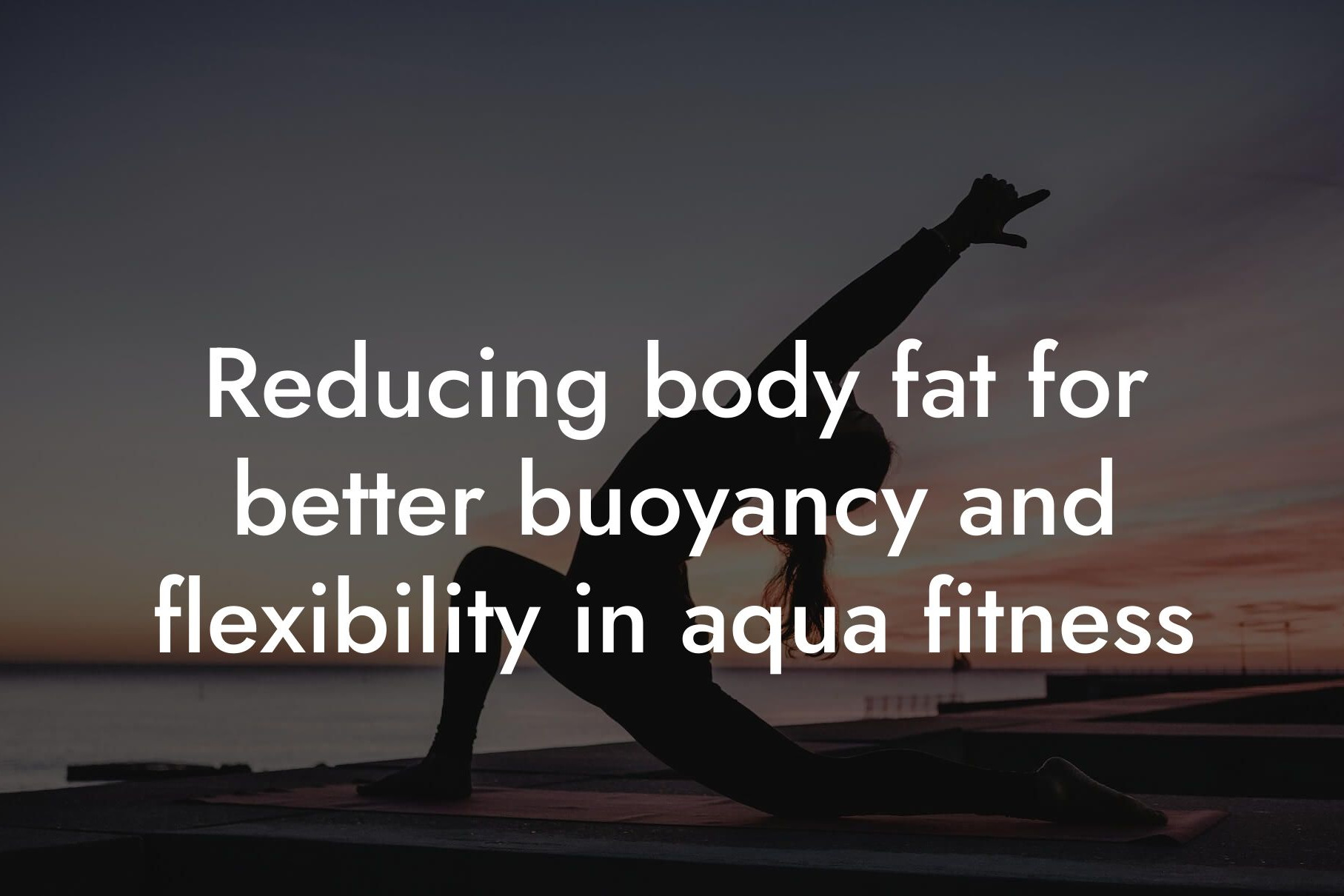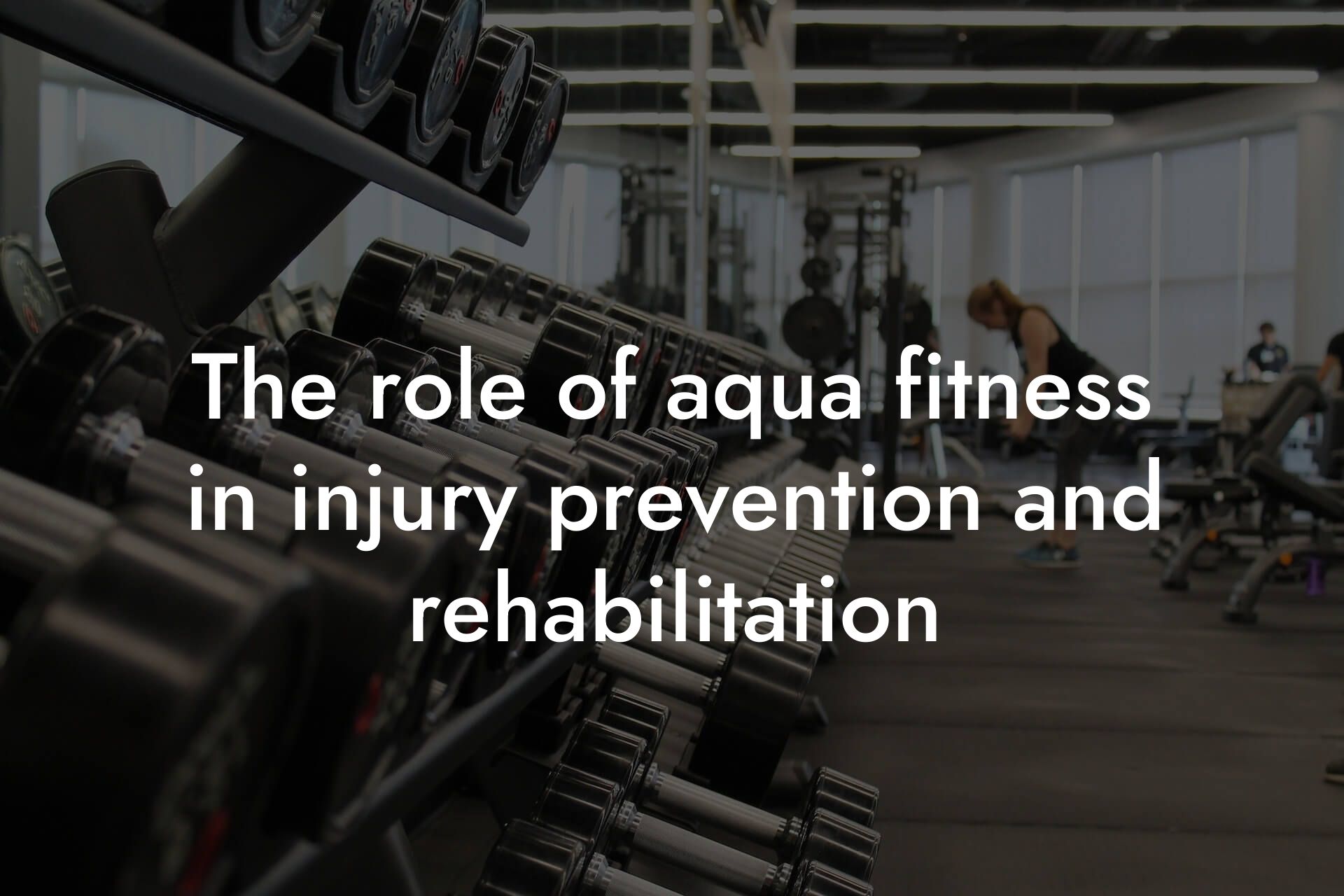As a high-earning professional, you understand the significance of maintaining a healthy and fit physique. Engaging in regular exercise, such as aqua fitness, is an excellent way to achieve this goal. However, have you ever stopped to consider how your body composition impacts your performance in the water? The truth is, body composition plays a critical role in determining your success in aqua fitness. In this article, we'll delve into the world of body composition and explore its impact on aqua fitness performance.
Table of Contents
What is Body Composition?
Body composition refers to the proportion of fat and lean mass in your body. Lean mass includes muscle, bone, and water, while fat mass encompasses body fat. A healthy body composition is essential for overall health and fitness. In the context of aqua fitness, body composition affects your buoyancy, propulsion, and overall efficiency in the water.
The Impact of Body Fat on Aqua Fitness Performance
Excess body fat can hinder your performance in aqua fitness. Here are a few reasons why:
• Buoyancy: Body fat is less dense than water, which means it can cause you to float more easily. While this may seem like an advantage, it can actually reduce your propulsion and increase your energy expenditure. As a result, you may tire more quickly and struggle to maintain a steady pace.
• Drag: Excess body fat can create additional drag in the water, making it more challenging to move through the water efficiently. This can lead to increased energy expenditure and decreased performance.
• Injury Risk: Carrying excess body fat can put additional stress on your joints, particularly in the hips, knees, and ankles. This increased stress can lead to injuries, which can sideline you from your aqua fitness routine.
The Role of Lean Mass in Aqua Fitness Performance
Lean mass, on the other hand, is essential for optimal aqua fitness performance. Here's why:
• Propulsion: Lean mass, particularly muscle, is responsible for generating power and propulsion in the water. The more lean mass you have, the more efficient you'll be at moving through the water.
• Endurance: A higher percentage of lean mass can help you maintain a steady pace and recover more quickly between exercises. This is because lean mass is more efficient at using oxygen and generating energy.
• Injury Prevention: Lean mass, particularly muscle, helps to stabilize and support your joints, reducing the risk of injury.
How to Optimize Your Body Composition for Aqua Fitness
So, how can you optimize your body composition for aqua fitness? Here are a few tips:
• Resistance Training: Incorporate resistance exercises into your workout routine to build lean mass. Focus on exercises that target your core, legs, and glutes, as these are the primary muscles used in aqua fitness.
• Cardiovascular Exercise: Engage in regular cardiovascular exercise, such as swimming or cycling, to burn excess body fat and improve your overall fitness.
• Diet and Nutrition: Focus on a balanced diet that includes plenty of protein, complex carbohydrates, and healthy fats. Avoid processed foods and sugary drinks, which can hinder your progress.
How DEXA Scans Can Help
At Tano Performance Group, we understand the importance of body composition in aqua fitness performance. That's why we offer DEXA scans, a cutting-edge technology that provides a comprehensive assessment of your body composition. With a DEXA scan, you'll gain valuable insights into your:
• Body Fat Percentage: Get an accurate measurement of your body fat percentage, including visceral fat and lean mass.
• Bone Density: Assess your bone density, which is critical for injury prevention and overall health.
• Lean Mass Distribution: Identify areas where you may need to focus on building lean mass, such as your core or legs.
In conclusion, body composition plays a critical role in aqua fitness performance. By understanding the impact of body fat and lean mass on your performance, you can take steps to optimize your body composition and achieve your fitness goals. At Tano Performance Group, we're committed to helping you unlock your full potential with our comprehensive DEXA scans and expert guidance. Take the first step towards achieving your aqua fitness goals today!
Final Thoughts
Remember, body composition is just one aspect of overall fitness. By combining a healthy diet, regular exercise, and a comprehensive understanding of your body composition, you'll be well on your way to achieving your aqua fitness goals. Don't let excess body fat hold you back – take control of your body composition today and start performing at your best!
Frequently Asked Questions
What is body composition, and how does it impact aqua fitness performance?
Body composition refers to the percentage of fat, lean mass, bone density, and water in your body. In the context of aqua fitness, body composition plays a crucial role in determining your performance. For instance, a higher percentage of body fat can increase buoyancy, making it easier to stay afloat, but it can also reduce your power and speed in the water. On the other hand, a higher percentage of lean mass can improve your strength and endurance, but it can also increase your overall weight, making it more challenging to stay afloat.
How does body fat percentage affect aqua fitness performance?
A higher body fat percentage can provide more buoyancy in the water, making it easier to perform certain exercises, such as water aerobics or swimming. However, excessive body fat can also reduce your power and speed, making it more challenging to perform high-intensity exercises. Additionally, a higher body fat percentage can increase your risk of injury, particularly in the joints.
What is the ideal body fat percentage for aqua fitness?
The ideal body fat percentage for aqua fitness varies depending on individual goals and preferences. However, a general guideline is to aim for a body fat percentage between 18-24% for men and 25-31% for women. This range allows for a balance between buoyancy and power, making it easier to perform a variety of exercises in the water.
How does lean mass impact aqua fitness performance?
Lean mass, which includes muscle and bone density, plays a critical role in aqua fitness performance. A higher percentage of lean mass can improve your strength, power, and endurance in the water, making it easier to perform high-intensity exercises. Additionally, lean mass can also improve your overall bone density, reducing your risk of injury.
What is the relationship between bone density and aqua fitness performance?
Bone density is a critical component of body composition that affects aqua fitness performance. A higher bone density can improve your overall strength and power in the water, making it easier to perform exercises that involve weight-bearing or resistance. Additionally, a higher bone density can also reduce your risk of injury, particularly in the joints.
How does water percentage impact aqua fitness performance?
Water percentage, which includes the amount of water in your body, can affect your aqua fitness performance. A higher water percentage can improve your buoyancy and reduce your overall weight, making it easier to perform exercises in the water. However, a lower water percentage can improve your power and speed, making it easier to perform high-intensity exercises.
What is the ideal water percentage for aqua fitness?
The ideal water percentage for aqua fitness varies depending on individual goals and preferences. However, a general guideline is to aim for a water percentage between 50-60%. This range allows for a balance between buoyancy and power, making it easier to perform a variety of exercises in the water.
How can I measure my body composition for aqua fitness?
There are several ways to measure body composition for aqua fitness, including dual-energy X-ray absorptiometry (DXA), hydrostatic weighing, and skinfold measurements. DXA is a non-invasive test that uses X-rays to measure bone density and body composition. Hydrostatic weighing involves measuring your weight in water to determine your body density. Skinfold measurements involve measuring the thickness of your skin folds at specific points on your body to estimate your body fat percentage.
What are the benefits of knowing my body composition for aqua fitness?
Knowing your body composition can help you tailor your aqua fitness program to your individual needs and goals. For instance, if you have a high body fat percentage, you may want to focus on exercises that improve your power and speed. If you have a high percentage of lean mass, you may want to focus on exercises that improve your strength and endurance. Additionally, knowing your body composition can help you track your progress and make adjustments to your program as needed.
How can I improve my body composition for aqua fitness?
Improving your body composition for aqua fitness involves a combination of diet, exercise, and lifestyle changes. Focus on a balanced diet that includes plenty of protein, healthy fats, and complex carbohydrates. Engage in regular exercise, including strength training and cardio, to improve your lean mass and reduce your body fat percentage. Additionally, get plenty of rest and recovery time to allow your body to adapt to the demands of aqua fitness.
What are some common misconceptions about body composition and aqua fitness?
One common misconception is that having a high body fat percentage is always a bad thing. While excessive body fat can reduce your power and speed, a moderate amount of body fat can provide buoyancy and make it easier to perform certain exercises. Another misconception is that lean mass is only important for strength training. In reality, lean mass is critical for aqua fitness performance, as it improves your strength, power, and endurance in the water.
How does age impact body composition and aqua fitness performance?
Age can impact body composition and aqua fitness performance in several ways. As we age, our body fat percentage tends to increase, while our lean mass tends to decrease. This can affect our buoyancy, power, and speed in the water. Additionally, age-related changes in bone density can increase our risk of injury. However, regular exercise and a healthy lifestyle can help mitigate these changes and improve our overall aqua fitness performance.
How does gender impact body composition and aqua fitness performance?
Gender can impact body composition and aqua fitness performance in several ways. Generally, men tend to have a higher percentage of lean mass and a lower percentage of body fat compared to women. This can affect their power, speed, and endurance in the water. Additionally, women may experience changes in body composition during pregnancy and menopause, which can affect their aqua fitness performance.
Can I improve my aqua fitness performance without changing my body composition?
Yes, it is possible to improve your aqua fitness performance without changing your body composition. Focus on improving your technique, increasing your strength and endurance, and incorporating interval training and plyometrics into your program. Additionally, work on improving your flexibility and mobility to reduce your risk of injury.
How often should I measure my body composition for aqua fitness?
It's recommended to measure your body composition every 4-6 weeks to track your progress and make adjustments to your program as needed. This can help you stay motivated and ensure that you're on track to achieving your goals.
What are some common mistakes people make when trying to improve their body composition for aqua fitness?
One common mistake is focusing too much on weight loss or body fat percentage, rather than overall body composition. Another mistake is neglecting to incorporate strength training and interval training into their program, which can improve their power and speed in the water. Additionally, people may not get enough rest and recovery time, which can impede their progress and increase their risk of injury.
How can I incorporate strength training into my aqua fitness program?
Incorporating strength training into your aqua fitness program can improve your power and speed in the water. Focus on exercises that target your upper body, such as push-ups and rows, as well as exercises that target your lower body, such as squats and lunges. You can also incorporate resistance bands or weights into your program to increase the intensity.
What are some exercises that can help improve my body composition for aqua fitness?
Some exercises that can help improve your body composition for aqua fitness include water aerobics, swimming laps, and strength training exercises such as push-ups, rows, squats, and lunges. You can also incorporate interval training and plyometrics into your program to improve your power and speed.
How can I stay motivated to improve my body composition for aqua fitness?
Staying motivated to improve your body composition for aqua fitness involves setting realistic goals, tracking your progress, and rewarding yourself for your achievements. Find a workout buddy or join a fitness community to stay accountable and motivated. Additionally, focus on the benefits of improved body composition, such as increased energy and confidence, rather than just the aesthetics.
What are some resources available to help me improve my body composition for aqua fitness?
There are several resources available to help you improve your body composition for aqua fitness, including fitness trackers, nutrition apps, and online workout programs. You can also consult with a personal trainer or fitness coach who specializes in aqua fitness to create a customized program tailored to your needs and goals.
How can I incorporate nutrition into my body composition plan for aqua fitness?
Incorporating nutrition into your body composition plan for aqua fitness involves focusing on a balanced diet that includes plenty of protein, healthy fats, and complex carbohydrates. Aim to eat a variety of fruits, vegetables, whole grains, and lean protein sources to support your overall health and fitness goals. Additionally, stay hydrated by drinking plenty of water before, during, and after your workouts.
Here are some related articles you might love...
- Maintaining muscle tone and endurance in aqua fitness
- Reducing body fat for better buoyancy and flexibility in aqua fitness
- The role of aqua fitness in injury prevention and rehabilitation
- Using DEXA scans to monitor progress in aqua fitness
- Nutrition tips for sustained energy in aqua fitness classes
- Bone density and its role in aqua fitness performance
- Balancing strength, flexibility, and cardiovascular health in aqua fitness
- Strength training tips to complement your aqua fitness routine
- Recovery techniques for aqua fitness practitioners
Zak Faulkner
Zak Faulkner is a leading authority in the realm of physical health and body composition analysis, with over 15 years of experience helping professionals optimise their fitness and well-being. As one the experts behind Tano Performance Group, Zak has dedicated his career to providing in-depth, science-backed insights that empower clients to elevate their physical performance and overall health.
With extensive knowledge of DEXA technology, Zak specializes in delivering comprehensive body assessments that offer precise data on body fat, muscle mass, bone density, and overall physique. His expertise enables individuals to make informed decisions and achieve their fitness goals with accuracy and confidence. Zak’s approach is rooted in a deep understanding of human physiology, combined with a passion for helping clients unlock their full potential through personalised strategies.
Over the years, Zak has earned a reputation for his commitment to excellence, precision, and client-focused service. His guidance is trusted by top professionals who demand the best when it comes to their health. Whether advising on fitness programs, nutritional strategies, or long-term wellness plans, Zak Faulkner’s insights are a valuable resource for anyone serious about taking their health and fitness to the next level.
At Tano Performance Group, Zak continues to lead our Content Team revolutionising how professionals approach their physical health, offering unparalleled expertise that drives real results.




